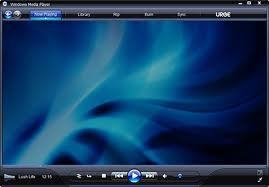Digital Media Players
Digital media players are hardware devices that are designed to receive data from a source to be streamed and viewed/heard through a television or sound system. The hardware processes the signal in one of two ways:
Wired Network – Some digital media players connect to the network through a wired connection. An Ethernet connection to a router is necessary to allow access to files on a PC or Network Storage location such as a server or hard disk that is set up through the digital media player.
Wireless Network – Some digital media players come with built in wireless capabilities while others allows the user to add a USB accessory that provides wireless compatibility. A wireless router that is configured to allow access to media stored somewhere on the network is also required to be able to use the wireless function.
Depending on the brand and model of the digital media player, a variety of options are available for connecting the hardware to a television or home media center. A variety of different compatibility options for audio and video playback are offered along with these connection options. Some digital media players may also have Internet capability.
Video Outputs – A means of connecting a television or monitor that provides multiple outputs. Of these outputs, an HDMI output capable of up to 1080p may be available. Component Video output or a Composite Video Option may also be available.
Audio Outputs – Generally, most digital media players offer a series of options. Connections for Stereo Analog Audio with a right and left channel may be standard for television or audio system input. An optical Digital Audio option is common with most modern digital media players.
Compatibility for Video Files – Video codec compatibility is preinstalled into the digital media player for a variety of formats. Such options include:
- MPEG1 ( includes AVI, MKV Streamer, TS, DAT, MPG, MPEG and VOB format)
- MPEG2 (includes MKV, DAT, MPG, MPEG, VOB, ISO, IFO, TS, TP and M2TS format)
- MPEG4, (includes AVI, MP4, MKV, MOV, WMV, and ASF format)
- DivX, (includes versions 3-6 in format)
- H.264 (includes AVC, TS, AVI, MP4, MKV, MOV, FLV and M2TS format)
- VC-1 (includes TS, AVI, ASF, WMV and M2TS format)
- WMV9 in ASF and WMV format
- Real Video formatted for version 8-10 in RM or RMVB
- Xvid all formats
- Other Video Codec Options
The compatibility in video codec may be expanded in the future depending on the brand and firmware update options.
Compatibility for Audio Files – Audio codec compatibility is preinstalled for a variety of formats into the digital media player allowing audio playback for a variety of files. Such options include:
- MPEG audio
- MP3
- WAV
- WMA
- FLAC
- OGG
Other audio codec options that support Dolby Digital, DTS, PCM, LPCM, ADPCM, AAC, RA, and MKA may be included but are not as common. The compatibility of audio codec may be expanded in the future depending on the brand and firmware update options.
Connectivity Options – WIFI may be available on the device, which makes it possible for it to become a wireless digital media player or media center. UPnP support for a variety of devices is common and allows media to be loaded directly from cameras, phones, or other devices. USB support is usually available and makes it possible to load data from portable storage devices or expansible services such as wireless connectivity. An Ethernet port is usually available, which makes it possible to connect to the network to access network resources to pull digital media from.
Internet Capabilities – Many modern digital media players use an active Internet connection via wired or wireless connection to connect to video and audio streaming. Connectivity to streaming video sources from popular news sources, sports broadcasts, and just about any other stream is usually possible. Many digital media players can connect to websites such as YouTube to access videos as well. Most modern digital media players can also connect to Internet radio sources and other online resources through an active Internet connection.


Comments - No Responses to “Digital Media Players”
Sorry but comments are closed at this time.